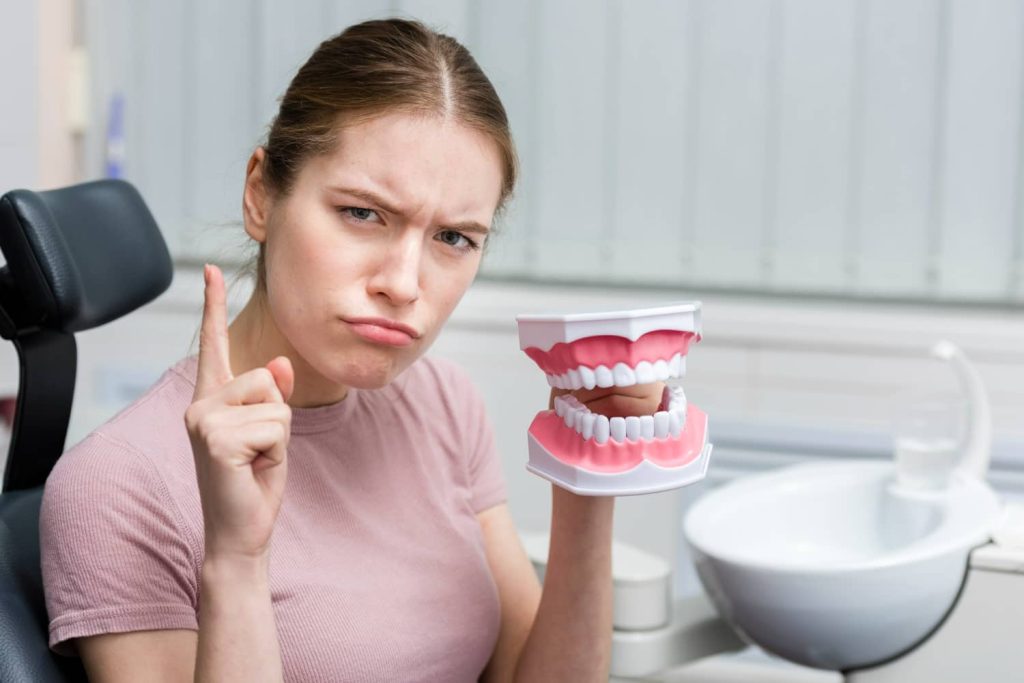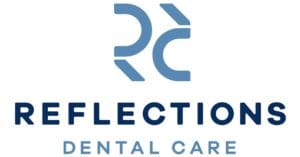At Reflections Dental Care, we understand that keeping your gums healthy is just as important as taking care of your teeth. While most people know the importance of brushing and flossing, there are a few terms related to gum health that often get mixed up. Two such terms are periodontal disease and gingivitis. Both are common conditions that affect the gums, but they are quite different in terms of severity and impact on your overall oral health.
In this blog, we’ll walk you through the key differences between periodontal disease and gingivitis, explaining what they are, how they develop, and how you can protect yourself from them. Let’s break it down step by step.
What is Gingivitis?
Gingivitis is the mildest form of gum disease and is generally reversible with proper dental care. It happens when the gums become inflamed due to plaque buildup on the teeth. Plaque is a sticky film of bacteria that forms when food particles and bacteria mix. If plaque is not regularly removed through brushing and flossing, it can irritate the gums, causing them to become red, swollen, and bleed easily, especially when brushing.
Some of the main symptoms of gingivitis include:
- Red or swollen gums
- Bleeding gums, particularly when brushing or flossing
- Bad breath (halitosis)
- Tender gums
While gingivitis can sound serious, the good news is that with proper oral hygiene, it is highly treatable. Regular brushing, flossing, and professional cleanings can clear up gingivitis before it progresses to more serious conditions.
What is Periodontal Disease?
Periodontal disease, or periodontitis, is a more advanced stage of gum disease that develops when gingivitis is left untreated. This condition not only affects the gums but also damages the tissues and bones that support the teeth. When plaque isn’t removed, it hardens into tartar, which can only be removed by a dentist. Tartar buildup leads to further infection and inflammation, causing the gums to pull away from the teeth, creating pockets where bacteria can thrive.
Some signs of periodontal disease include:
- Gums that recede or pull away from the teeth
- Teeth that appear longer due to gum recession
- Loose or shifting teeth
- Deep pockets between the teeth and gums
- Persistent bad breath
- Changes in the way your teeth fit together when you bite
If periodontal disease is left untreated, it can result in tooth loss. The bone that supports your teeth can also be severely damaged, which can cause long-term oral health problems. Periodontal disease is much harder to treat than gingivitis, often requiring deeper cleanings or even surgical procedures.
If you’re concerned about your gum health, don’t wait—contact our Oklahoma City dentist at (405) 751-4556 to schedule an appointment today!
Key Differences Between Gingivitis and Periodontal Disease
- Severity:
Gingivitis is the milder form of gum disease and can typically be reversed with good oral hygiene habits. Periodontal disease, on the other hand, is a more severe condition that causes permanent damage to the gums, bone, and structures that support the teeth. - Symptoms:
With gingivitis, the symptoms are usually mild, such as bleeding gums and swelling. Periodontal disease involves more serious symptoms like gum recession, deep pockets around the teeth, and shifting or loose teeth. - Reversibility:
Gingivitis can usually be reversed with daily brushing, flossing, and regular dental cleanings. Periodontal disease may require more intensive treatments, such as scaling and root planing or even surgery. Once the damage has occurred, it cannot be fully reversed, but its progression can be managed.
- Cause:
Gingivitis is primarily caused by poor oral hygiene that leads to plaque buildup on the teeth. Periodontal disease occurs when gingivitis is left untreated, and plaque hardens into tartar, leading to further infection and inflammation.
- Impact on Teeth and Gums
Gingivitis only affects the gums and does not usually cause lasting damage to the teeth or bone. Periodontal disease can cause the gums to recede, teeth to loosen, and the bone that holds the teeth to break down. This may lead to tooth loss if not treated.
What Causes Gingivitis and Periodontal Disease?

The primary cause of both gingivitis and periodontal disease is the buildup of plaque on your teeth. However, several other factors can increase the risk of developing these conditions.
- Poor Oral Hygiene: Inadequate brushing and flossing habits are the main cause of plaque buildup and gum disease.
- Smoking or Chewing Tobacco: Tobacco use is a significant risk factor for gum disease.
- Hormonal Changes: Pregnancy, puberty, and menopause can all affect the gums and make them more susceptible to infection.
- Medical Conditions: Diseases such as diabetes and certain medications can increase the risk of gum disease.
- Genetics: Some people may be more genetically predisposed to gum disease.
How to Prevent Gingivitis and Periodontal Disease
Preventing both gingivitis and periodontal disease is largely about maintaining good oral hygiene practices. Here are some simple steps you can take to keep your gums healthy:
- Brush Your Teeth Twice a Day
Use a soft-bristled toothbrush and fluoride toothpaste to brush your teeth at least twice a day. Be sure to brush along the gum line to remove plaque. - Floss Daily
Flossing helps remove food particles and plaque from between your teeth that a toothbrush can’t reach. - Visit the Dentist Regularly
Regular dental checkups and cleanings are essential. Your dentist can remove plaque and tartar buildup that you can’t reach with regular brushing and flossing. - Eat a Healthy Diet
Eating a balanced diet rich in vitamins and minerals can help strengthen your gums and teeth. Avoid sugary snacks, which can contribute to plaque buildup. - Quit Smoking
Smoking not only weakens your immune system but also increases your risk of gum disease. Quitting can improve your overall oral health. - Manage Medical Conditions
If you have diabetes or other health conditions that affect your oral health, work with your doctor to manage them effectively.
How Gingivitis and Periodontal Disease Are Treated
If you’re diagnosed with gingivitis, your dentist will likely recommend professional cleaning to remove plaque and tartar. They may also give you tips on improving your at-home oral care routine. Once you’ve addressed the cause of gingivitis, your gums will typically heal within a few days to a couple of weeks.
If you have periodontal disease, treatment will depend on the severity of the condition. Early-stage periodontal disease may require scaling and root planing, which is a deep cleaning procedure. If the disease has advanced, more intensive treatments, including gum surgery, may be necessary. After treatment, it’s important to maintain regular checkups to prevent the condition from worsening.
Conclusion
While gingivitis and periodontal disease both affect your gums, the key difference lies in the severity and potential for damage. Gingivitis is the early, reversible stage of gum disease, while periodontal disease is more serious and can result in tooth loss if not properly managed. The good news is that both conditions are preventable with proper oral hygiene and regular visits to your dentist. If you notice any symptoms of gum disease, be sure to reach out to Reflections Dental Care for guidance and treatment.
By taking good care of your gums today, you can ensure a healthier smile for years to come. Call us now at (405) 751-4556!


